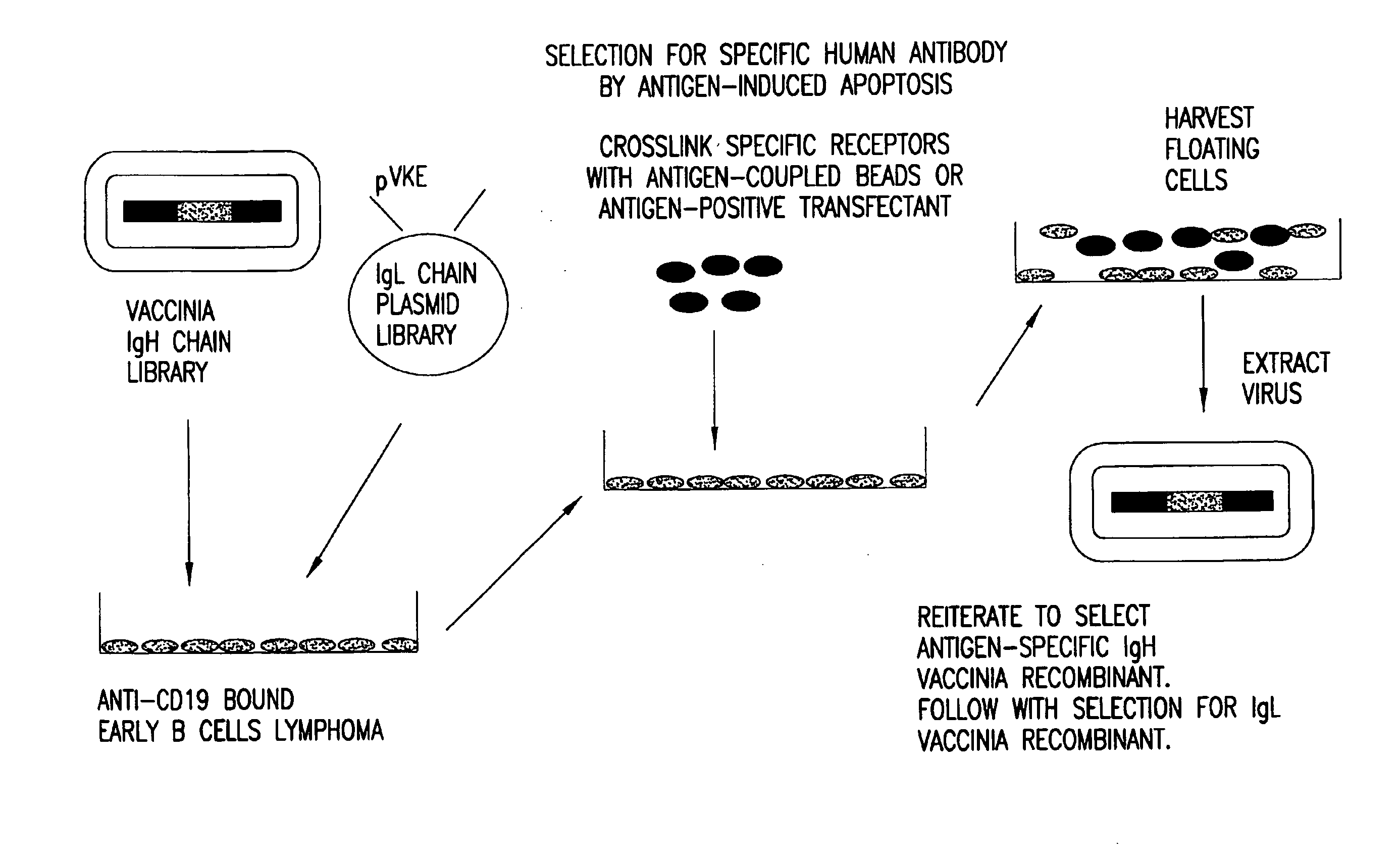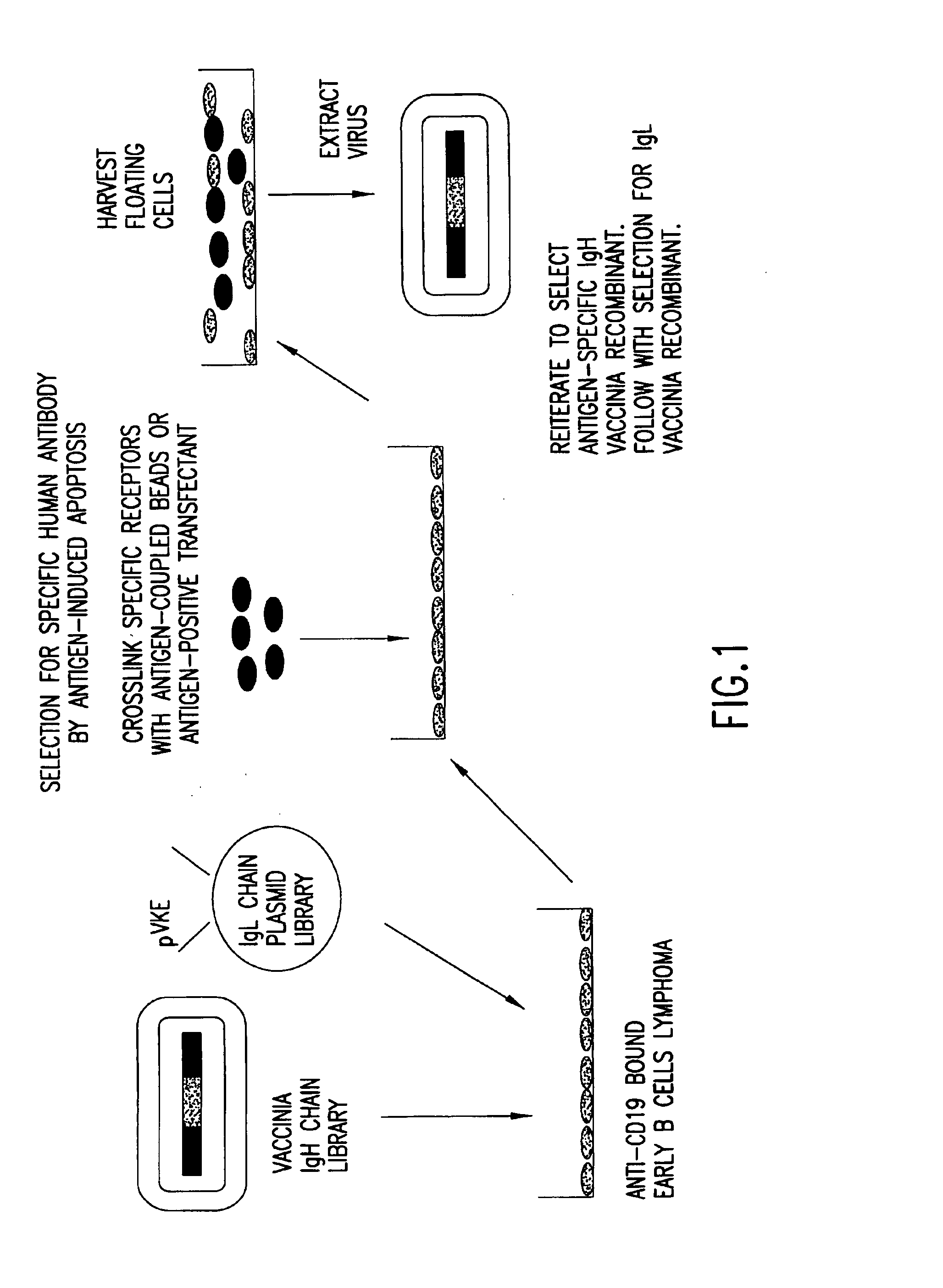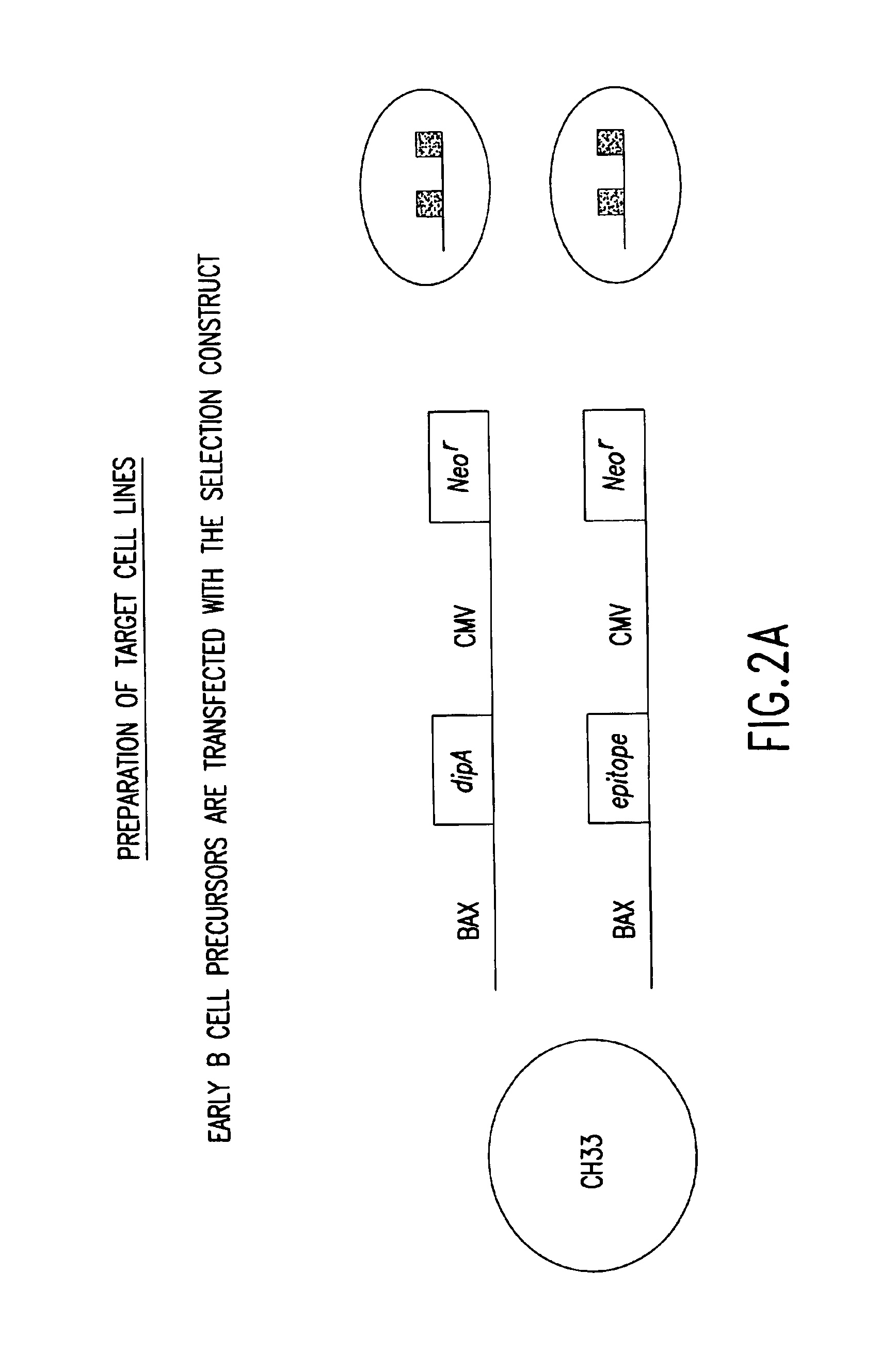In Vitro methods of producing and identifying immunoglobulin molecules in eukaryotic cells
a technology of immunoglobulin and eukaryotic cells, applied in the direction of instruments, directed macromolecular evolution, peptides, etc., can solve the problems of difficult raising antibodies to self-antigens, laborious and costly process, and may not be the optimal target epitop
- Summary
- Abstract
- Description
- Claims
- Application Information
AI Technical Summary
Problems solved by technology
Method used
Image
Examples
example 1
Construction of Human Immunoglobulin Libraries of Diverse Specificity
[0279]Libraries of polynucleotides encoding diverse immunoglobulin subunit polypeptides are produced as follows. Genes for human VH (variable region of heavy chain), VK (variable region of kappa light chain) and VL (variable region of lambda light chains) are amplified by PCR. For each of the three variable gene families, both a recombinant plasmid library and a vaccinia virus library is constructed. The variable region genes are inserted into a p7.5 / tk-based transfer / expression plasmid between immunoglobulin leader and constant region sequences of the corresponding heavy chain or light chain. This plasmid is employed to generate the corresponding vaccinia virus recombinants by trimolecular recombination and can also be used directly for high level expression of immunoglobulin chains following transfection into vaccinia virus infected cells. Lymphoma cells are first infected with the vaccinia heavy chain library, f...
example 2
Strategies for Selection of Human Immunoglobulins which Bind a Specific Antigen
[0304]Vaccinia virus expression vectors comprising polynucleotides encoding recombinant heavy chain immunoglobulin subunit polypeptides which, in combination with some unidentified light chain, confer specificity for a defined antigen, are selected as follows, and as shown in FIG. 1. Selection of specific immunoglobulin heavy and light chains is accomplished in two phases. First, a library of diverse heavy chains from antibody producing cells of either naïve or immunized donors is constructed in a pox virus based vector by trimolecular recombination (see Example 5) using as a transfer plasmid pVHE, constructed as described in Example 1, and a similarly diverse library of immunoglobulin light chains is constructed in a plasmid vector such as pVKE and pVLE, constructed as described in Example 1, in which expression of the recombinant gene is regulated by the p7.5 vaccinia promoter. The immunoglobulin heavy ...
example 3
Selection of an Antibody with Defined Specificity from a Library of 109 Combinations of Immunoglobulin Heavy and Light Chains
[0314]The affinity of specific antibodies that can be selected from a library is a function of the size of that library. In general, the larger the number of heavy and light chain combinations represented in the library, the greater the likelihood that a high affinity antibody is present and can be selected. Previous work employing phage display methods has suggested that for many antigens a library that includes 109 immunoglobulin heavy and light chain combinations is of a sufficient size to select a relatively high affinity specific antibody. In principle, it is possible to construct a library with 109 recombinants each of which expresses a unique heavy chain and a unique light chain or a single chain construct with a combining site comprising variable regions of heavy and light chains. The most preferred method, however, is to generate this number of antibo...
PUM
| Property | Measurement | Unit |
|---|---|---|
| distance | aaaaa | aaaaa |
| concentration | aaaaa | aaaaa |
| concentration | aaaaa | aaaaa |
Abstract
Description
Claims
Application Information
 Login to View More
Login to View More - R&D
- Intellectual Property
- Life Sciences
- Materials
- Tech Scout
- Unparalleled Data Quality
- Higher Quality Content
- 60% Fewer Hallucinations
Browse by: Latest US Patents, China's latest patents, Technical Efficacy Thesaurus, Application Domain, Technology Topic, Popular Technical Reports.
© 2025 PatSnap. All rights reserved.Legal|Privacy policy|Modern Slavery Act Transparency Statement|Sitemap|About US| Contact US: help@patsnap.com



